Laura McNeill's Blog, page 14
April 1, 2015
Signing ‘Center of Gravity’ Sept. 5 & 6, 2015 – Decatur Book Festival
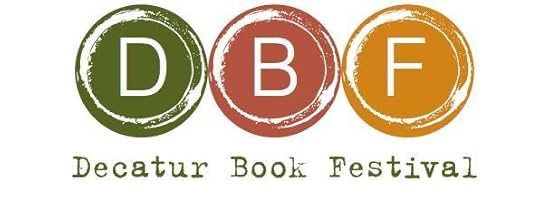
I’m super-excited to be a part of the 2015 Decatur Book Festival, taking place from Sept 5 – 6th.
I’ll be speaking briefly and signing books for about ten minutes (my July 14, 2015 release, Center of Gravity, and one TBD Lauren Clark book) in the Emerging Authors Tent!
(my July 14, 2015 release, Center of Gravity, and one TBD Lauren Clark book) in the Emerging Authors Tent!
I will have an exact date and time in the coming weeks and will share that with you as soon as I have it!
The Atlanta Journal-Constitution Decatur Book Festival is the largest independent book festival in the country, drawing people from all over the metro Atlanta area and North Georgia.
 In the past, the Festival has included authors like Emily Giffin and Joshilyn Jackson.
In the past, the Festival has included authors like Emily Giffin and Joshilyn Jackson.
See more at: https://www.decaturbookfestival.com/ or on their Facebook page.
Do you have any favorite book festivals? I’d love to hear about them! Leave a comment below! ~ Laura
March 30, 2015
Creating Unforgettable Settings: Mobile, Ala.
Recently, I asked my Facebook friends about their favorite novel settings. The answers were awesome, and varied, with people mentioning everything from the graveyards of New Orleans to the Deep South and the streets of New York City to San Francisco.

Natchez, Miss.
There’s no doubt that a novel’s setting, when done well, improves a reader’s experience. For example, I can’t imagine Greg Iles’ Natchez Burning in anywhere other than small town Mississippi. Gone Girl needed a suburban nouveau-riche feel. And Robert Galbraith (JK Rowling) does a brilliant job describing the busy London cityscape in The Cuckoo’s Calling and The Silkworm.
When I first began writing Center of Gravity, I’d already decided to locate the novel in a fictional town south of Nashville, Tennessee. I invented neighborhoods, a school, a college, and a coffee shop—one so cozy that I wanted to spend my days there!
 As I went through revisions (many, many revisions) it became clear that this very authentic story about the challenges of marriage, family, and forgiveness needed a real world location.
As I went through revisions (many, many revisions) it became clear that this very authentic story about the challenges of marriage, family, and forgiveness needed a real world location.
As I live and work in the Deep South, the overall feeling from my editors was that Center of Gravity should be set along the Gulf Coast—specifically, in Mobile, Alabama.
 In many ways, Mobile ended up being ideal for Center of Gravity. Founded in 1702 as the capital of colonial French Louisiana, Mobile offers a rich culture rooted in tradition. The city boasts lovely antebellum architecture, city parks, museums, and a lively arts community. As in many Southern cities, Mobile is a place where people greet strangers on the street like old friends, where children are still expected to address their elders with “sir” and “ma’am,” and manners and church attendance are still held in high esteem.
In many ways, Mobile ended up being ideal for Center of Gravity. Founded in 1702 as the capital of colonial French Louisiana, Mobile offers a rich culture rooted in tradition. The city boasts lovely antebellum architecture, city parks, museums, and a lively arts community. As in many Southern cities, Mobile is a place where people greet strangers on the street like old friends, where children are still expected to address their elders with “sir” and “ma’am,” and manners and church attendance are still held in high esteem.
Here’s a quick look at Center of Gravity’s setting:
 Sights & Smells: Mobile is home to lush, lovely flowering plants and trees. As Center of Gravity is set in March and April, azaleas are in full bloom, dogwoods are covered with white blossoms, and camellias are opening their pink buds to the sky.
Sights & Smells: Mobile is home to lush, lovely flowering plants and trees. As Center of Gravity is set in March and April, azaleas are in full bloom, dogwoods are covered with white blossoms, and camellias are opening their pink buds to the sky.
In the evenings, with cicadas chirping, the air seems to be scented with honeysuckle and wisteria.
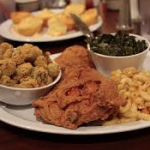 Food: The Deep South is known for its delicious food and recipes passed down from generation to generation.
Food: The Deep South is known for its delicious food and recipes passed down from generation to generation.
In the summer, especially, it’s common to encounter neighborhood barbeques, crawfish and shrimp boils, as well as Sunday dinners after church with crispy fried chicken, okra, collard greens, and sweet cornbread. Yum!
 Weather: To me, Mobile’s weather can be summed up in one word: sultry. Spring is glorious and warm, and summers are hot, humid, and full of sunshine.
Weather: To me, Mobile’s weather can be summed up in one word: sultry. Spring is glorious and warm, and summers are hot, humid, and full of sunshine.
Mobile is just thirty minutes from snow-white Gulf of Mexico beaches, but is also traditionally known one of the wettest cities in the nation, so rainstorms and hurricanes aren’t uncommon!
 Landmarks: In Center of Gravity, the gorgeous grounds of Springport College (this one is fictional!) play a major role in the story’s action, as does Miss Beulah’s coffee shop—a favorite gathering place, and Mobile Prep, one of the city’s elite private schools.
Landmarks: In Center of Gravity, the gorgeous grounds of Springport College (this one is fictional!) play a major role in the story’s action, as does Miss Beulah’s coffee shop—a favorite gathering place, and Mobile Prep, one of the city’s elite private schools.
This photo (left) is of Spring Hill College in Mobile, Alabama, where I based the look and feel of Springport College.
I hope this gives you a taste of what Mobile, Ala. is all about! Admittedly, I was a bit nervous about making the city the setting for Center of Gravity. Though there’s always intense pressure to get the setting of a novel just right, there’s even more pressure when the location of my novel is my adopted hometown!
What are your thoughts on settings? What makes them unforgettable?
March 25, 2015
The Story Behind “Center of Gravity”
A week ago, I talked to a group of avid readers, 70 men and women, all members of the Friends of the Mobile Public Library. I was asked to speak about writing and my upcoming novel, Center of Gravity, being released July 15, 2015 by Harper Collins/Thomas Nelson.
Here’s the Center of Gravity summary:
The truth could cost her everything.
Her whole life, Ava Carson has been sure of one thing: she doesn’t measure up to her mother’s expectations. So when Mitchell Carson sweeps into her life with his adorable son, the ready-made family seems like a dream come true. In the blink of an eye, she’s married, has a new baby, and life is grand.
Or is it?
When her picture-perfect marriage begins unraveling at the seams, Ava convinces herself she can fix it. It’s temporary. It’s the stress. It’s Mitchell’s tragic history of loss.
If only Ava could believe her own excuses.
Mitchell is no longer the charming, thoughtful man she married. He grows more controlling by the day, revealing a violent jealous streak. His behavior is recklessly erratic, and the unanswered questions about his past now hint at something far more sinister than Ava can stomach. Before she can fit the pieces together, Mitchell files for divorce and demands full custody of their boys.
Fueled by fierce love for her children and aided by Graham Thomas, a new attorney in town —Ava takes matters into her own hands, digging deep into the past. But will finding the truth be enough to beat Mitchell at his own game?
Center of Gravity weaves a chilling tale, revealing the unfailing and dangerous truth that things—and people—are not always what they seem.
So, what’s the “real” story behind the story of Center of Gravity?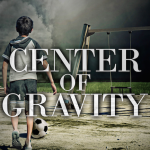
In previous years, I’d churned out fun, frothy tales about the Deep South, writing under the pen name Lauren Clark. Halfway through the writing of one of my novels, my marriage fell apart. Everything that I had built and trusted had come unglued. I wasn’t sleeping or eating, I was worried about my children, about my job, and about my future.
I shelved the novel and hunkered down in survival mode. I moved into a new house in a new neighborhood, restarted my life, and slowly got back on my feet.
Months later, it hit me that I missed writing. But I’ll be honest. I worried about starting again. I worried about not being good enough. But I knew that I wasn’t a quitter. I am a survivor. That feeling stayed with me until I picked up my Mac, opened it, and began writing again.
This time, I couldn’t bring myself to write the funny, frothy Southern novels I’d been working on. This time, I tackled a serious storyline, a suspenseful story about a family in peril.
You see, I had spent the past year or more talking to other women and men about their stories of love and loss. It seemed that everyone I talked to had an aunt, a cousin, a best friend, or a sister who had been through a tragic, heart-wrenching break up. Some involved children, some didn’t. Many included alienation from friends and family. Some involved violence. The majority involved a long, drawn out, expensive court battles.
All of the stories left me feeling, somehow, that I was not quite alone. I began writing the novel, which would become Center of Gravity.
Again, this is not MY story, but the story of every woman or man who has gone through a terrible divorce or break up. It is the story of any person who has been threatened by the loss of his or her children.
It is also a story of tenacity and survival, about persevering in the face of insurmountable odds. It is a story about fact and fiction; about the lies we tell ourselves and the lies we are told.
It is also a story about family and a mother’s love for her children—a bond that can’t be broken by time or distance. And finally, it is a story about forgiveness and moving on—about walking away from tragedy better, not bitter.
I can’t wait to share ‘Center of Gravity’ with you on July 15th. I’ll be sharing much more about the characters, setting, the REAL cover, and story line in the weeks to come!
So, do you know anyone who’s survived a bad break up or divorce? How did they get through it? Did anything positive come out of it? I’d love your best advice to include in a future blog post!
~ Laura
March 17, 2015
Book Signing Saturday March 21 @ P&P
Ah! Spring has sprung and everything’s blooming! Time for the annual Arts & Crafts Festival in Fairhope, Alabama!
I’m really excited to enjoy the festival this weekend! I’ll be in Fairhope at Page & Palette this Saturday, March 21st from 11 am – 4 pm. Please stop by and say hello, pick up a few bookmarks and goodies…. AND I’ll be giving out homemade PIE with every purchase of Pie Girls, my little novel that celebrates Fairhope, baking, and coming home!
 For all of you who love homemade rolls and sweets from Andalusia, Ala., Sister Schubert will also be there (OMGoodness, her products are delicious!)
For all of you who love homemade rolls and sweets from Andalusia, Ala., Sister Schubert will also be there (OMGoodness, her products are delicious!)
There are so many exciting events happening in Fairhope this spring and summer! I encourage you to follow them on Facebook, Twitter, visit their website at www.pageandpalette.com, or stop by the bookstore the next time you’re on Section Street.
If you’d like to know more about Pie Girls, you can check out the summary HERE.
Hope your spring is lovely ~ See you Saturday for some pie!
xx, Lauren
March 5, 2015
The Beauty of Indie Bookstores & Book Clubs
I just spent the most fantastic evening with a room full of (almost) complete strangers!
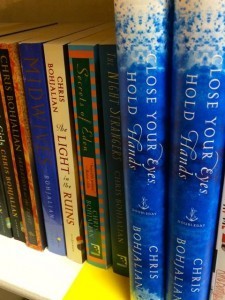
Chris Bohjalian’s Novels
I say “almost,” because I ran into, and happily sat with, a woman I’d met at a lunch honoring author Chris Bohjalian (Midwives, Close Your Eyes, Hold Hands)…which is another blog post entirely.
Tonight’s event event was a “Book Club” evening at Page and Palette, Inc. in Fairhope, Ala. Stephanie and Anderson, two dedicated P & P employees, host the gathering a few times a year. Nearly 40 men and women crowded into the Latte Da coffee shop section of P & P as the dynamic duo discussed their must-read recommendations for March, April, May, and June.
Of the 25 books on the list, a few of the picks included:
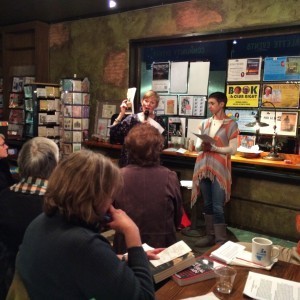
Stephanie & Anderson
The Bone Tree, Greg Iles (Natchez Burning, Iles is a Natchez, Mississippi author)
The Truth According to Us, Annie Barrows (The Guernsey Literary & Potato Peel Pie Society)
The Nightingale, Kristin Hannah (Firefly Lane)
Early Warning, Jane Smiley (A Thousand Acres)
The World’s Largest Man, Harrison Scott Key (Humor, Growing Up, Family Relationships)
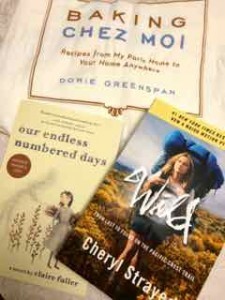
My Winnings!
The evening involved lots of discussion, questions, laughter, and prizes. I am happy to say that everyone who attended took home one free Advanced Reader Copy (ARC) of a recently released novel. Mine was Our Endless Numbered Days by Claire Fuller. (Premise: A father takes his 8 year-old daughter to live in the woods after telling her the world has been destroyed. It hasn’t.)
At the end of the night, Stephanie and Anderson encouraged everyone to come back with written thoughts about the novels so that they could tape up our recommendations on the shelves! (Fun!)
So, I say cheers to Page and Palette for hosting a wonderful evening, spreading the word about authors and their books, and keeping the love of reading alive.
I’d love to know … do you belong to a book club? What books are you reading this year?
xx, Laura
February 22, 2015
5 Ways to Write A Fantastic First Line
There’s no one perfect formula for writing fantastic first lines. They can be short or long, descriptive or straightforward. The choice, ultimately, is up to you.
For more ideas, peruse your favorite books and study the first lines that really grab your attention. Figure out why. How do those first lines make you feel? What questions come to mind?
Here are examples of five great ways to open your novel:
1. Be Suspenseful – “She heard a knocking, and then a dog barking.” – The Pilot’s Wife, Anita Shreve
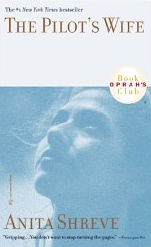
I can almost feel the pinpricks running up my spine. Why is someone knocking? The person at the door must be a stranger if the dog is barking. Oh no!
2. Offer A Unique Voice – “If you really want to hear about it, the first thing you’ll probably want to know is where I was born, and what my lousy childhood was like, and how my parents were occupied and all before they had me, and all that David Copperfield kind of crap, but I don’t feel like going into it, if you want to know the truth.”- The Catcher in the Rye, J.D. Salinger
It’s a classic example, and one you may have seen before, but it’s worth revisiting. Readers immediately get a sense of Holden Caulfield’s personality. Caulfield is caustic and bitter, but his casual speaking style, voice, and offhand manner draw readers in.
3. Be Funny – “OK. Don’t panic. Don’t panic.” – Shopaholic to the Stars, Sophie Kinsella
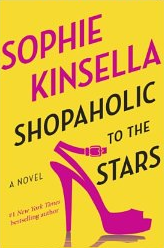
Kinsella opens all of her Shopaholic books this way. Of course, heroine Becky Brandon (née Bloomwood) is always in a panic, and for good reason! Kinsella always makes me laugh and continues Becky’s hilarious antics page after page.
4. Be Vivid – “Sometimes, in that split second when Ray Levine snapped a picture and lost the world in the strobe from his flashbulb, he saw the blood.” – Stay Close, Harlan Coben
Just from those few words, I’m able to picture the scene in detail. Coben does a great job with first lines, chapter endings, and description in general.
5. Use Emotion – “He’d stopped trying to bring her back.” – Eleanor & Park, Rainbow Rowell
Oh my goodness. I was gripped from the first line. Sure, it’s a YA novel about first love, but Rowell’s novel is anything but trite.
A few things to keep in mind:
A fantastic first line isn’t so fantastic if you lead off with something funny, but the rest of your book is serious. If you ask a question in your opening line, somewhere within the novel, you must answer it. Think of it as fulfilling a promise—your duty as an author!
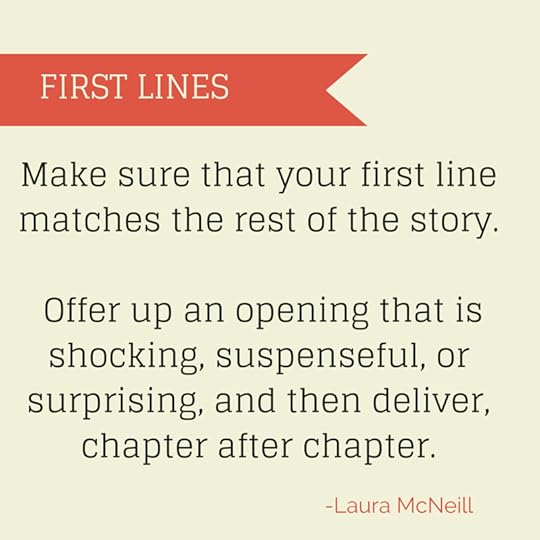
Because first lines are so crucial, plan on putting in some effort to get it right. That might mean rewriting your first sentence a dozen times. It might also mean throwing it out entirely and using your second or third line.
Do not, by any means, spend weeks staring at a blank screen trying to conjure up the perfect first line. Writers need to be writing, after all.
So, get something down, finish that first chapter, and push on. An epiphany may strike in the fifth or fifteenth chapter. It may take until the end of the novel to come up with a first line that’s just right.
– Laura
7 Seconds to Make A Great Impression
According to leading psychologists, you have only 7 seconds to make a good first impression. It’s barely the blink of an eye—enough for a smile, a firm handshake, and a warm hello.
Other experts suggest a 30 second window might exist—which is better—but still barely enough time to get in a who, what, where, why, or how.
It’s the same for your novel.
In a snippet of time, readers glance at a novel’s cover, scan the book’s summary, and if compelled, open their e-readers to the first page. It’s there, on the opening line, where authors must entice, interest, frighten, entertain, or delight. When readers are hooked emotionally, they’ll be convinced to read on.
Sound daunting? Easier said that done? Don’t let it scare you off. This is a must-have skill you can master with a little research, inspiration, and a willingness to revise.
Here are 10 great ways to grab a reader’s attention, using examples from my own library.
1. Be Surprising – “Novalee Nation, seventeen, six months pregnant, thirty-seven pounds overweight—and supe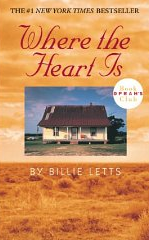 rstitious about sevens—shifted uncomfortably in the seat of the old Plymouth and ran her hands down the curve of her belly.” – Where the Heart Is, Billie Letts
rstitious about sevens—shifted uncomfortably in the seat of the old Plymouth and ran her hands down the curve of her belly.” – Where the Heart Is, Billie Letts
Immediately, I can picture this seventeen year-old girl. What is Novalee’s story? What will happen to her? Why is she in a car?
2. Be Shocking – “She had often dreamed of her little sister floating dead beneath the surface of the ice, but tonight, for the first time, she envisioned Hannah clawing to get out.” – Plain Truth, Jodi Picoult
This is such a gripping opening! I immediately wanted to know what happened to Hannah. Is the older sister at fault? Why is the dream different tonight?
3. Be Offbeat – “Dad’s dead,” Wendy says offhandedly, like it’s happened before, like it happens every day. – This is Where I Leave You, Jonathan Tropper

This is a hilarious book that was just made into a movie. The opening is dry and unexpected. Why is Wendy so casual? Who is she talking to? What happened to her father?
4. Be Clear – “Call me Ishmael.” – Moby-Dick, Herman Melville
This is such a commanding, attention-grabbing opening. Why call him Ishmael, as it is not the main character’s first name? Who should call him Ishmael?
5. Promise to reveal something – “When I was seventeen, my life changed forever.” – A Walk to Remember, Nicholas Sparks
We’ve all been seventeen. Most of us have had experiences that have changed our lives forever. This first line is instantly relatable. How did the character’s life change? Was the result wonderful or terrible?
__
As you can see from the above examples, there’s no one perfect formula for writing fantastic first lines. They can be short or long, descriptive or straightforward. The choice, ultimately, is up to you.
When you’ve written a first line that makes you happy, ask yourself (again) if the sentence entices, interests, frightens, entertains, or delights. Will it hook readers and take them through the rest of the story? Can you deliver page after page? Then, run your opening line by a few trusted, but objective readers. Find what they think.
– Laura
5 Ways to Write Great Scenes – The Tiny Details
Last time, I talked about 5 key things to keep in mind when writing scenes. Today, let’s break down the small, but crucial details.
1. First sentence – Is anyone taking a shower, having a dream, or drinking tea? Please, please, please skip all of these as scene openers. Donald Maas says this in Writing the Breakout Novel Workbook:
“…cut scenes set in kitchens or living rooms or cars driving from one place to another, or that involve drinking tea or coffee or taking showers or baths, particularly in a novel’s first fifty pages… the reason is that, in careless hands, such scenes lack tension.”
I urge you to pick up a book that you love—on your own shelf, on your iPhone, or in a library. Read the first lines of scenes. How does the reader draw you in? What prompts you to continue down the page?
2. Set the Stage – In the first paragraph or two, orient the reader. Where is your main character? Are you in the Deep South or Alaska? Is he or she in a mansion or a shack? Time of day? Season? Weather? Describe the sunshine, the wind, and the sounds around your main character. You can almost color-code your scenes according to the mood.
Check out the first page of The Poisonwood Bible by Barbara Kingsolver. Her rich descriptions insert you, the reader, smack dab into the middle of the dark and dangerous Belgian Congo.
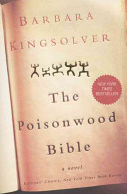
3. Use your Senses – Choose two or three from the five senses and describe a sight, smell, taste, touch, or sound that is unusual and surprising to the reader. Do this early in the scene, and try to do this every chapter. It may feel awkward at first, but it is a way to ground and orient the reader as well.
Describe the sun’s color as egg yolk, give your heroine’s best friend the scent of sugar cookies, make a sound like microwave popcorn, or a touch as sticky as a toad’s tongue. My son recently talked about a Honey Crisp apple tasting like SweeTarts candy. Love it! Surprise your reader.
Sue Monk Kidd (The Secret Life of Bees, The Invention of Wings) is fantastic at stimulating the senses. Open her work on almost any page for great examples.
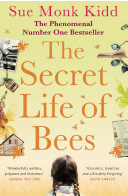
4. Action/Reaction – If your antagonist pulls a gun, does your main character jump? Scream? Faint? Quiver?
As authors, it’s our duty to show instead of tell. In doing so, we give credit to our readers that they are smart and will figure out that the main character is feeling glad, mad, or sad. Describe the ache in your character’s belly, the stab in her spine, the tension in her legs.
5. Wrap Up – Does the end of the scene prompt readers to turn the page? Don’t tie everything up too neatly and place a bow on top. Allow your main character to exit the scene before the action stops. Your reader will want to find out what happens next.
James Scott Bell, in Plot and Structure, suggests the following methods of skillfully ending a scene or chapter:
A mysterious line of dialogue
A secret suddenly revealed
A major decision or vow
Announcement of a shattering event
A reversal or surprise
A question left hanging in the air
Both James Scott Bell and Donald Mass, whom I mentioned earlier, are masters of story craft. I urge you to check out their books.
Read any great writing craft books? Please share!
– Laura
5 Ways to Write Sensational Scenes – The Big Picture
Read a novel lately that you couldn’t put it down? What about a book that haunted you in your sleep or kept you up at night? The author of this novel, no doubt, wrote a fantastic story, and that story consisted of some pretty fabulous scenes.
That’s what a novel is, after all. It’s a series of well-written scenes. Those scenes are sewn together in such a way that the reader is compelled to turn page after page.
Think about scene writing like climbing up a giant cliff overlooking the ocean, or going up, click by click, to the highest point of a rollercoaster. You use scenes to build and build, and then you reach the apex (climax) and scream to the finish line!
After all, it’s our job as authors to keep the momentum going. We don’t want readers closing the book. We want readers asking themselves, “What happens next?” We want reviewers who say, “I read this novel in one sitting!”
So, what can you do make your scenes compelling and memorable? Whether you’ve written 3 novels or 30, this checklist should help you focus, tighten, and polishing. It will also help you decide which scenes to keep and which to throw away. Here’s the breakdown:
The Big Picture
1. Purpose – Even if you are a plotter or a pantser, this step is important. Determine the purpose of each scene, and figure it out before you begin writing. Are you introducing your antagonist? Is it a scene in which your character discovers something important? Does he meet someone who will change his life?
2. Value – Perhaps more importantly, ask yourself, as a writer, does the scene move the story forward? For example, if your entire novel centers on a circus in Madrid and all of a sudden, you’ve written a scene involving polar bears in the arctic, you’d better be able to tie the two together. If not, no matter how magical the writing, toss it.
3. Goal – This is different from your purpose or reason for writing the scene, as an author. In order to write sensational scenes, determine your main character’s goal or desire. It may continue the overarching goal for the book; it may be what the character wants to achieve that particular time and day. In that scene, what does your main character want more than anything else? Why?
For example, in the Hunger Games, Katniss promises her sister she will live.
In Gone with the Wind, Scarlett wants to never be hungry again.
In The Maze Runner, Thomas wants to escape the maze and gain his memory and (and hopefully, his family) back.
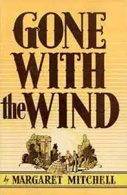
Then, ask yourself: why is this goal important? Why does it matter? What will happen if your main character doesn’t achieve her goal? If she fails, what are the consequences?
Katniss breaks her promise to her sister; she will die. Scarlett will have to sell Tara and lose her way of life. Thomas would never gain his memory back; never see his family again.
If a reader is invested in your character’s goal, if your reader wants to see your character succeed, he or she will empathize with your main character. Your reader will become emotionally bonded to the character.
Think about when you have NOT finished a book. It’s likely you stopped caring about the character. Don’t let that happen in your novel.
4. Conflict & Tension – Figure out what or who stands in the way of your character achieving his or her goal. James Scott Bell, in Plot & Structure, has this to say:
“When two characters with opposing agendas meet, you have built-in tension. A cop trying to question a witness who won’t talk; a would be lover tries to get a woman to give him the time of day and she won’t; a parent tries to find out what his wayward teen is doing but can’t.”
5. Dialogue – Is your novel’s dialogue balanced and realistic? Listen to people talk. Rarely do people have conversati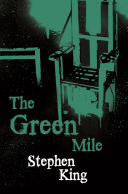 ons in complete sentences. They use contractions. They interrupt. Stephen King does a fantastic job with dialogue. Check out a few pages of The Green Mile for proof.
ons in complete sentences. They use contractions. They interrupt. Stephen King does a fantastic job with dialogue. Check out a few pages of The Green Mile for proof.
Try listening to conversations around you to capture those subtle nuances. Characters should also speak differently, depending on their background and culture.
A New Yorker will sound quite different from a Southern belle.
What are your tips for writing sensational scenes? I’d love to hear them!
– Laura
7 Ways to Test Your Story Spark
Last time, I talked about story sparks—those small ideas writers use to jump start their novels. Those little epiphanies can come at any time, from anywhere–while you sleep, in a dream–even when walking your dog!
To make sure those story sparks have staying power, many authors then use the “What if” technique to test their idea. Is it strong, compelling, and emotionally-charged?
Some “What if” examples include:
What if…teenagers were dropped into a world where the only escape is through a gigantic maze filled with robotic killing machines? (The Maze Runner)
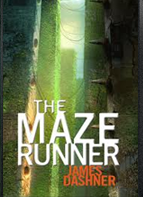
What if…a seemingly happily married woman disappears on the morning of her fifth anniversary, leaving behind a diary that implicates her husband in her murder? (Gone Girl)
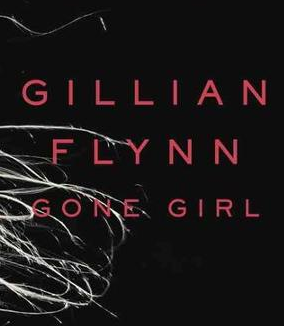
Both The Maze Runner and Gone Girl boast fantastic “What if” questions. But today, let’s talk about your story spark. Whether you have three ideas or 300, how do you cull the magical ideas from the not so magnificent?
Choosing the strongest, most viable story spark will help you avoid slogging through 50 pages of manuscript before you realize there is no way you can finish the last 250. Believe me. I’ve done it.
So, first, ask yourself, “Has this story been done before?”
Creative coach Mark McGuiness (and many others) say that “experienced storytellers will tell you there are no new stories, just endless variations on old tales.” I believe there is much truth to that. Case in point, the thousands of romance novels written every year in which boy meets girl, boy loses girl, boy wins back girl = happily ever after.
The lesson is this: if you’ve decided that you must write about vampires that sparkle, give your story a fresh, new angle. Is it told in the future? Is the story set on Venus? Do the characters die after 28 days? You see where I’m going with this. Don’t write someone else’s story. Write yours.
Then, use these 7 ways to test your story spark:

“What if” – Use the “What if” question. It works. You should be able to write down your concept in one sentence.
The Big Problem – What challenge is your character is facing? Is it meaningful and life altering? If your main character doesn’t solve the problem, what terrible thing will happen? For example, if Katniss loses the Hunger Games, she will die.
The Journey – Will the problem send your character on a journey, either physically, psychologically, or both? If not, ramp up the challenge.
Staying Power – Does the story spark really stick in your brain? Can you picture the characters? Do you already know the ending? If the answer’s yes, chances are, you’re got something good!
The Lesson – What lesson does the main character learn over the course of the story, and how does it change him/her? (The character arc is required of most novels, with the exception of Thrillers, in which characters spend most of their time trying not to die).
Commitment – If you’re aiming to write a novel, do you adore your story spark enough to stick with it through 300 pages or approximately 80,000 words? Think hard about this one!
Ask Around – Run your “What if” question by a few trusted friends (not including your mom—sorry!). Better yet, ask friends who read a lot—those friends glued to Kindles and Nooks.
If you’d like one extra method of checking your concept, listen to what author, blogger, and story structure master Larry Brooks has to say about making sure your idea is “high-concept.”
Brooks says, “High concept suggests a dramatic scenario or device—be it clever, unexpected, unseen, terrifying or just plain brilliant—that becomes the landscape upon which characters reveal themselves.”
He uses Alice Sebold’s The Lovely Bones as one high-concept “What if” example:
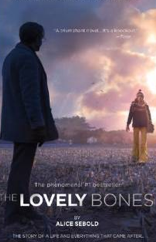
What if…a murder victim can’t rest in heaven because her crime remains unsolved, and chooses to get involved to help her loved ones gain closure?
If you haven’t read The Lovely Bones, it’s a hauntingly terrific novel that’s sold more than 10 million copies.
If you have suggestions about how to test your story idea, I’d love to hear them! Remember, in the words of Vladimir Nabokov, “The writer’s job is to get the main character up a tree, and then once they are up there, throw rocks at them.”
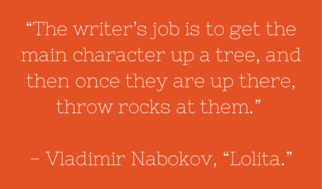
Amen to that!
– Laura



